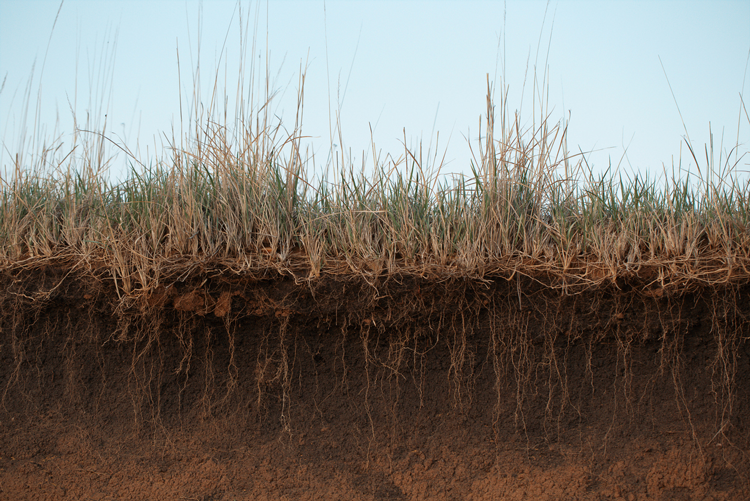
Out of sight, out of mind! This adage can certainly apply to our view of soil and the organisms that live in it. So, let’s uncover a key organism in soil — plant roots! Indeed, roots are the hidden half of plants, but they are necessary to perform many vital functions for the forages that help feed our families.
Roots give plants the structural footing to withstand the tempest wind and the pouring rain. Roots are the conduits for water and nutrients absorbed from soil. Roots are sometimes energy storage repositories for continued growth on a cloudy day. But did you know that roots are also the comforting home and food pantry for many microbial pilgrims that become the necessary allies for flourishing forages?
Small zone big benefits
Taking a deeper look into roots and their role in plant health, we should recognize the vital frontier of root exploration in the soil environment. The rhizosphere is a zone only a few millimeters distant from each root boundary. This zone becomes a hotbed of complex interactions that mostly benefit the plant, but it also contains dangerous villains that can cause disease.
The rhizosphere has several orders of magnitude greater microorganisms than bulk soil. This includes a greater microbial biomass, potentially more microbial diversity, and greater microbial activity. This is because readily available carbon substrates are exuded and slough off from growing plant roots at a high speed, and these foodstuffs feed a frenzy of microbial life. Close association of plants and soil microorganisms is exhibited in grand fashion at this interface.
A wealth of carbon
Microbial growth in the rhizosphere is intense because easily degraded carbon substrates are freely available for short periods of time; therefore, the microbial community present in the rhizosphere is often composed of rapid feeders. Ecologically, we consider them r-strategists that proliferate where organic carbon resources are abundant. In contrast, a more stable community of microorganisms (considered k-strategists) will eventually take over once resources diminish because they have to be diligent in working with more limited and difficult to decompose organic carbon resources.

The bacterial phylum Proteobacteria appears to be the most dominant in the rhizosphere. Other fungal phyla of Ascomycota and Glomeromycota are also key groups engaged in a diversity of root-soil-microbial interactions.
Plant communities, or types of grasses, forbs, legumes, trees, and inherent soil properties, such as texture, pH, and cation exchange capacity, have a large influence on which microbial communities proliferate in the rhizosphere. These factors not only affect the composition and structure of the rhizosphere but also its functional attributes.
Further, the microbial community will change from the intense period of rapid growth when a root tip passes by a particular micro-geographic coordinate in soil to a more diverse community when organic carbon resources are consumed and by-products of decomposition become the more stable organic carbon resource. That is until the next root tip begins to search for nutrients it desires from the decomposition of these shifting microbial communities. It becomes a never ending underground dance of shifting population.
A dynamic environment
The rhizosphere has all of the dynamics experienced at the field and global levels, only in miniature. Major disruptions can occur daily with growth of new roots that deposit sugary molecules, more structural carbon molecules, and even signal molecules. Gaping holes can be bored into nearby pores from earthworms burrowing their way to a daily food fest.
Deposition of fecal pellets rich in enzymes and unique growth-stimulating biomolecules might occur randomly from beetle larvae or springtails. Water saturation of pores can suddenly create a drowned aftermath of dead critters following an afternoon deluge or tropical storm.
Ecological engineering at the root level is an active area of research. One idea is to use ecological principles to obtain the most suitable management of an ecosystem. This may be to preserve a condition, such as high fertility and a microbial community able to resist pathogenic invasion, or to restore a condition of historical value and even to create new ecosystems of specific function.
Prospects abound for ecological engineering to engage humanity with its natural environment for a more sustainable future; however, daily life on the farm can be simply nurturing the complexity of soil life that masterfully abounds in the presence of a diversity of roots.
This article appeared in the February 2024 issue of Hay & Forage Grower on pages 17-18.
Not a subscriber? Click to get the print magazine.

